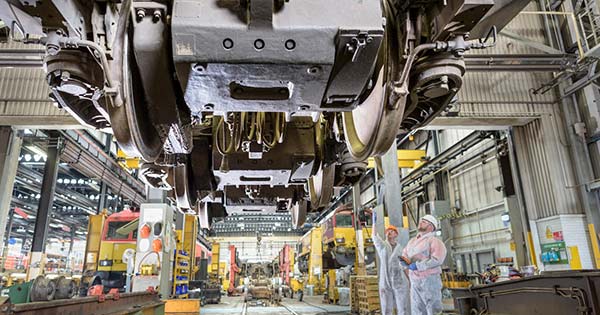Automotive original equipment manufacturers (OEMs) and their tier I and tier II suppliers have in the immediate term been hit by both supply and demand shocks that shut down production entirely at many major vehicle manufacturing facilities in March of 2020.
The Big Threes, plus Tesla, Subaru, and Bentley, came back online in mid-May, and much of the latent demand for vehicles of various types are expected to rebound. But manufacturers up and down the automotive value chain will have work to do in order to return to previous levels of productivity. Product innovations, supply chain resilience, and operational improvements should all be top priorities for the industry, and there is a role for technology to play.

Hedging to avoid supply chain disruptions
The halt of production happened for three reasons—the supply of labor was interrupted due to stay-at-home orders or as employees laid down tools because they got sick. Even if production were to continue, in many cases the just-in-time nature of the auto industry means production would halt as the result of suppliers stopping operations. In some regions, in particular, resuming a steady flow of parts from tier I and tier II automotive manufacturers could disrupt production for some time.
Heavy reliance on strict just-in-time parts delivery may also get a second look right now as supply chain disruptions have left some OEMs without the parts to complete their own production schedule. One practice may gain credence in the industry – Demand Driven Materials Requirement Planning (DDMRP). The placement of strategic buffers of parts, components, or subcomponents at critical points in the will cause some lean manufacturing devotees heartburn—but the two disciplines can be compatible.
Humans as an operational risk
In order to reliably restart, OEMs will in many cases need to come to terms with the fact that as biological organisms, human workers present risks in an environment where biohazards and communicable diseases may be resurgent globally. Prior to re-opening, manufacturers too had to examine their facilities and procedures to ensure their plants and facilities were not contributing to the spread of the virus among their workers and community. The same factors, combined with demand-side factors like interruptions to individual incomes and concern for the financial future lead to a complete halt in car sales as well. In Germany, where I live it was surreal to see a media landscape with no car commercials.
Senior management at OEMs should seriously re-examine their own operations and channels of distribution and consider how transformational technologies could make them more resilient to changing conditions and emergencies.
On the sales side, something as commonplace as a buyer-facing product configurator and e-commerce site could help them keep the lights on in the event of a disruption at local dealerships. The hard part of this would not be the technology—which is common and proven although to realize maximum benefit they would need the configurator to release a shop order into manufacturing and streamline the order to cash process. Due to the presence of a large distribution channel, some credit will probably need to be given a dealership partner who can interface with the customer as needed and handle delivery and subsequent service. So the portal must be configured to respect classes of trade even as it mitigates the risk of disruption in the region where the dealership is located.
While automakers are highly automated in their own operations, the degree of automation will probably accelerate, perhaps with increasing capacity even for plant floor production personnel to work remotely or limit exposure to contagions. From AI-driven production robots to remote assistance for asset management and maintenance, now that OEMs are operational again, they will be making investments designed to help them stay that way regardless of resurgent or new pandemics or disruptions.
Product lifecycles and demand planning
The pandemic has upset demand, which creates new headaches for demand planning. Automakers will need to closely monitor real-time metrics that indicate the resurgence of demand and send pull signals for parts and bring back workers accordingly. But the release of many model years is delayed. GM has managed apparently to keep the release of their cash cow SUV line on schedule while delaying the release of other new models. Kia meanwhile will focus on launching new products in markets that have mostly recovered while perhaps delaying launch in markets still struggling with the pandemic. Success, or failure will be driven in part by OEM’s ability to make good decisions on the timing of new models while ensuring they and their tier I and tier II suppliers have the resources and capacity to collaborate on a successful product launch without disruptions or initial quality problems. This will require enterprise project management capabilities that extend from the design process through the entire supply chain. Compressing or extending a project timeline as a program target date is moved and communicating the shifting timetables to vendors, with requisite revisions in a just-in-time delivery schedule, is not easy.
Finding a footing for the future
Volatile times are never fun, but we can take lessons away from them. Automakers must use the management principles and ERP software at their disposal to deal with the return to full productivity. And at the same time, they must prepare themselves for any disruptions that can happen in an intermediate-term future where, as we now know, the demand plan, supply chain, and operations can be upended at any time.







